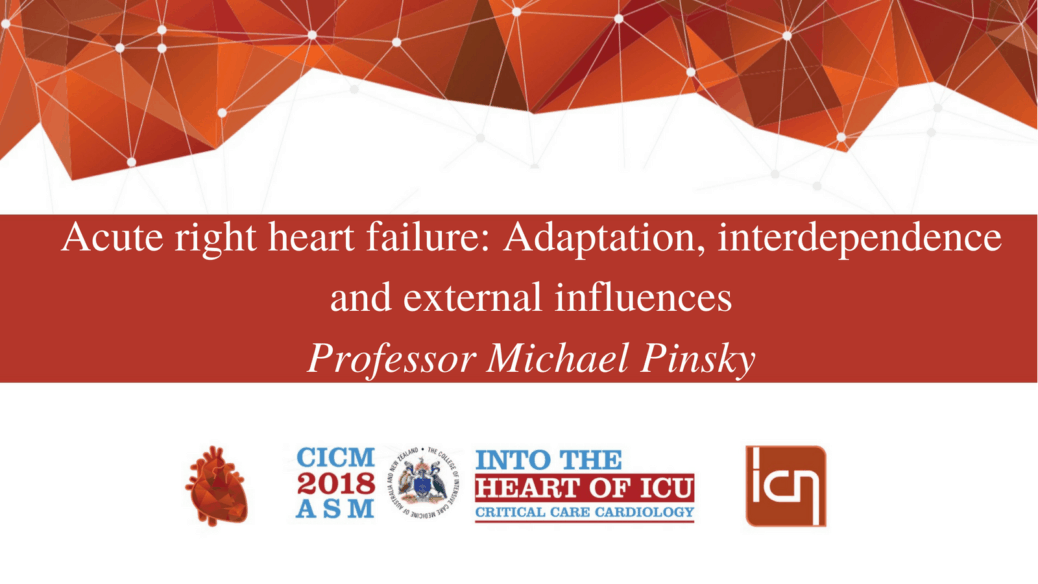The right ventricle (RV) is not important, until it is. Under normal conditions RV function merely keeps central venous pressure low and delivers all the venous return per beat into the pulmonary circulation under low pressure. If pulmonary artery pressures increase due to pulmonary vascular disease (embolism, ARDS, COPD), over-distention (COPD, asthma) or ischemia (embolism, pulmonary hypertension), the RV rapidly dilates decreasing left ventricular (LV) diastolic compliance via ventricular interdependence. Most clinicians presume that the RV is merely a weaker version of the LV, but follows that same rules. But this in not true. Normally, RV filling occurs without any measurable change in RV distending pressure owing to conformational changes in its shape rather than distention of its wall fibers. This effect allows central venous pressure to remain low despite major dynamic change sin venous return associated with breathing. RV ejection is exquisitely dependent of RV ejection pressure. Thus, if disease processes increase pulmonary artery impedance then RV dilation and failure will eventually occur. Furthermore, most of RV coronary blood flow occurs during systole, unlike LV coronary blood flow, which primarily occurs in diastole. Thus, systemic hypotension or relative hypotension where in pulmonary artery pressures equal or exceed aortic pressure must cause RV ischemia. Clinically these findings carry a common end result. For cardiac output to increase RV volumes must increase. If increasing RV volumes also result in increasing filling pressures then RV over distention may be occurring causing RV free wall ischemia. If relative systemic hypotension exists then selective increases in arterial pressure will improve RV systolic function. Accordingly, fluid resuscitation, if associated with rapid increases in central venous pressure should be stopped until evidence of acute cor pulmonale is excluded. Acute cor pulmonale can be treated by improving LV systolic function, coronary perfusion pressure or reducing pulmonary artery outflow impedance. The normal response of the RV to slowly increasing pulmonary artery pressures is to increase its intrinsic contractility (Anrep effect), but if the pressure load exceeds such adaptation, RV hypertrophy develops in an asymmetric fashion initially in the infundibulum before progressing to the RV free wall and septum. In chronic RV failure, dilation and RV wall thinning occurs as the heart reverts to preload to sustain stroke volume (Starling effect). Importantly, all these effects and their response to therapies can be assessed at the bedside using echocardiography and pulmonary arterial catheterization.

























